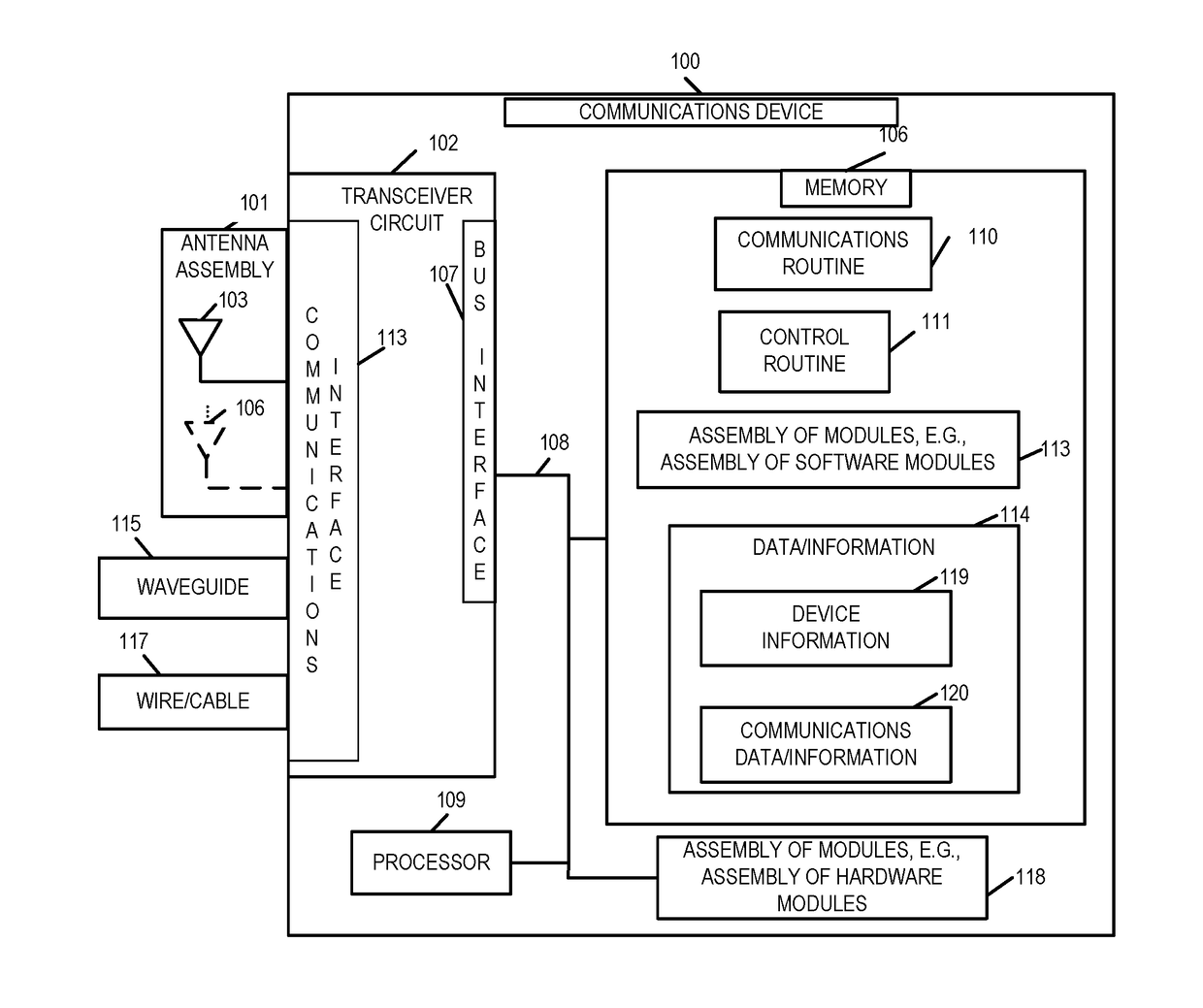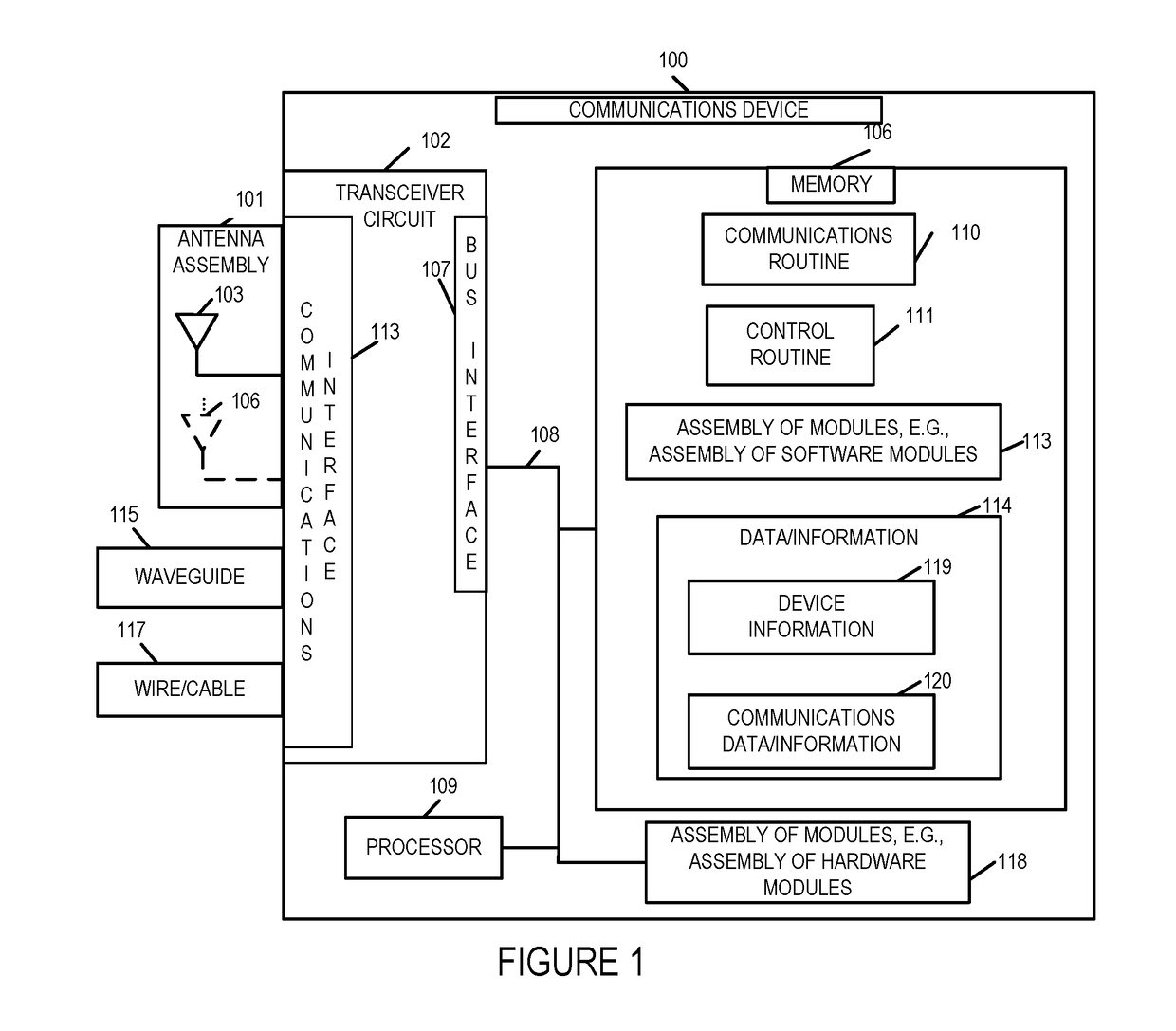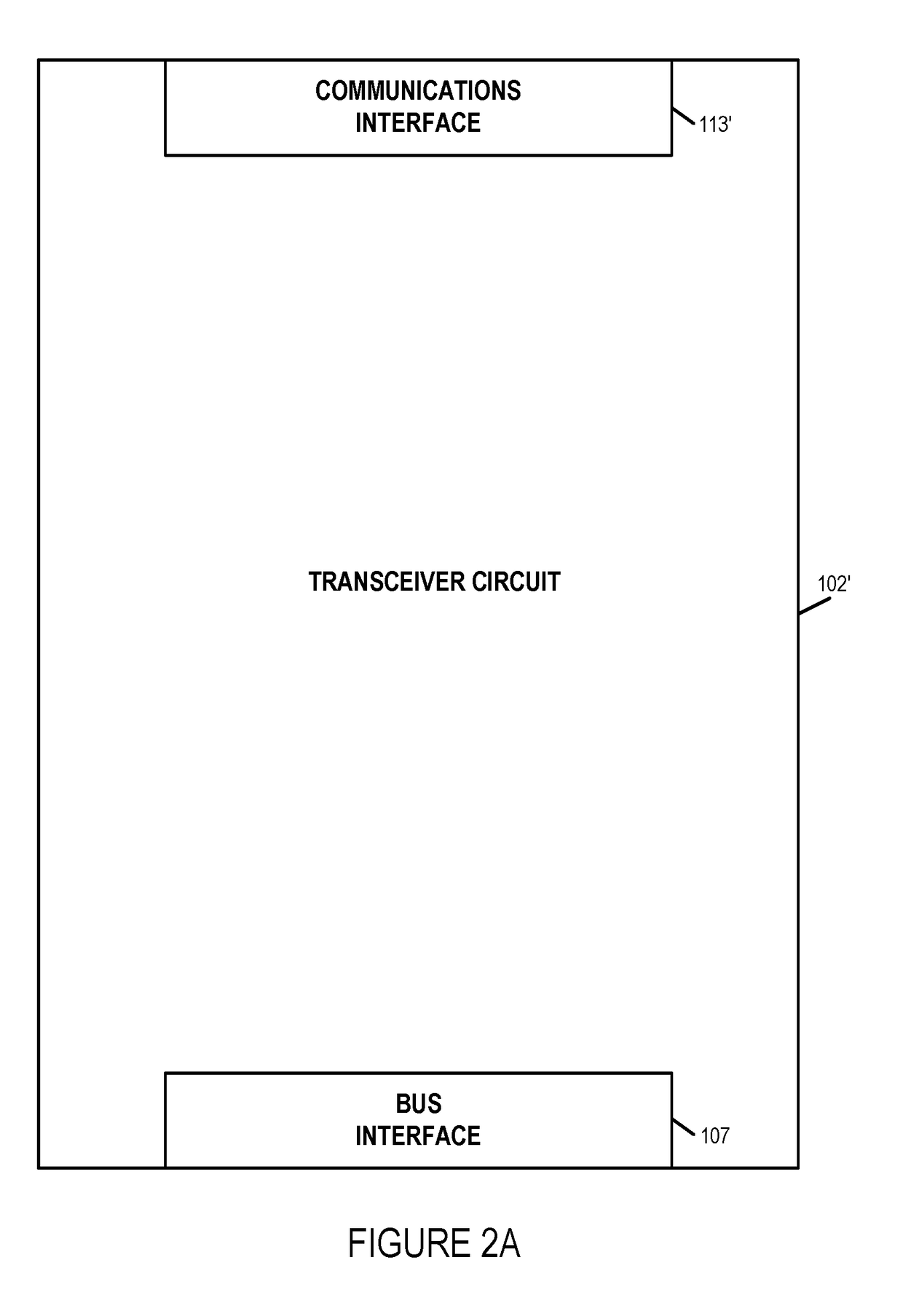Interference cancellation methods and apparatus
a technology of interference cancellation and apparatus, applied in the field of communication methods and apparatus, can solve problems such as interference problems, failure to cancel self interference by using one or more electronic circuits and filters implemented as electrical components operating in the same frequency range as the signals being received and transmitted, and failure to achieve the effect of cancelling self interferen
- Summary
- Abstract
- Description
- Claims
- Application Information
AI Technical Summary
Benefits of technology
Problems solved by technology
Method used
Image
Examples
embodiment 1
[0114]Apparatus embodiment 1 in directed to an apparatus comprising: a digital interference cancelation element (216) between a digital transmit element (206) and a receiver element (214) for generating a filter delay control signal (217) and a baseband interference cancelation signal 221; a combining element (209) in an RF receiver signal path; and an RF cancelation filter (222) positioned between an RF transmit signal path and the combining element (209) in an RF receiver signal path, the combining element receiving at a first input an RF frequency signal generated by the RF cancelation filter (222) from a signal received from the RF signal transmit path which is delayed in accordance with delay control information received from the digital interference cancelation element (216).
embodiment 2
[0115]Apparatus embodiment 2 includes the apparatus of embodiment 1, wherein the combining element subtracts the RF frequency signal generated by the RF cancelation filter (222) from a received signal supplied to a received signal input of the combiner (209).
embodiment 3
[0116]Apparatus embodiment 3 includes the apparatus of embodiment 1, wherein the combining element is an adder which adds the RF frequency signal generated by the RF cancelation filter (222) from a received signal supplied to a received signal input of the combiner (209); and wherein the cancelation signal is an inverse of an estimate of a received interference signal.
PUM
 Login to View More
Login to View More Abstract
Description
Claims
Application Information
 Login to View More
Login to View More - R&D
- Intellectual Property
- Life Sciences
- Materials
- Tech Scout
- Unparalleled Data Quality
- Higher Quality Content
- 60% Fewer Hallucinations
Browse by: Latest US Patents, China's latest patents, Technical Efficacy Thesaurus, Application Domain, Technology Topic, Popular Technical Reports.
© 2025 PatSnap. All rights reserved.Legal|Privacy policy|Modern Slavery Act Transparency Statement|Sitemap|About US| Contact US: help@patsnap.com



